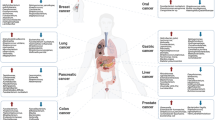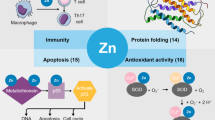Abstract
Epidemiological studies have demonstrated a significant correlation between regular aspirin use and reduced colon cancer incidence and mortality; however, the pathways by which it exerts its anti-cancer effects are still not fully explored. We hypothesized that aspirin’s anti-cancer effect may occur through downregulation of c-Myc gene expression. Here, we demonstrate that aspirin and its primary metabolite, salicylic acid, decrease the c-Myc protein levels in human HCT-116 colon and in few other cancer cell lines. In total cell lysates, both drugs decreased the levels of c-Myc in a concentration-dependent fashion. Greater inhibition was observed in the nucleus than the cytoplasm, and immunofluorescence studies confirmed these observations. Pretreatment of cells with lactacystin, a proteasome inhibitor, partially prevented the downregulatory effect of both aspirin and salicylic acid, suggesting that 26S proteasomal pathway is involved. Both drugs failed to decrease exogenously expressed DDK-tagged c-Myc protein levels; however, under the same conditions, the endogenous c-Myc protein levels were downregulated. Northern blot analysis showed that both drugs caused a decrease in c-Myc mRNA levels in a concentration-dependent fashion. High-performance liquid chromatography (HPLC) analysis showed that aspirin taken up by cells was rapidly metabolized to salicylic acid, suggesting that aspirin’s inhibitory effect on c-Myc may occur through formation of salicylic acid. Our result suggests that salicylic acid regulates c-Myc level at both transcriptional and post-transcription levels. Inhibition of c-Myc may represent an important pathway by which aspirin exerts its anti-cancer effect and decrease the occurrence of cancer in epithelial tissues.








Similar content being viewed by others
References
Thun MJ, Jacobs EJ, Patrono C. The role of aspirin in cancer prevention. Nature Rev Clin Oncol. 2012;9:259–67.
Rothwell PM, Price JF, Fowkes FGR, Zanchetti A, Roncaglioni MC, Tognoni G, et al. Short-term effects of daily aspirin on cancer incidence, mortality, and non-vascular death: analysis of the time course of risks and benefits in 51 randomised controlled trials. Lancet. 2012;379:1602–12.
Sahasrabuddhe VV, Gunja MZ, Graubard BI, Trabert B, Schwartz LM, Park Y, et al. Nonsteroidal anti-inflammatory drug use, chronic liver disease, and hepatocellular carcinoma. J Natl Cancer Inst. 2012;104:1808–14.
Gamba CA, Swetter SM, Stefanick ML, Kubo J, Desai M, Spaunhurst KM, et al. Aspirin is associated with lower melanoma risk among postmenopausal Caucasian women: The Women's Health Initiative. Cancer. 2013;119:1562–9.
Veitonmaki T, Tammela TL, Auvinen A, Murtola TJ. Use of aspirin, but not other non-steroidal anti-inflammatory drugs is associated with decreased prostate cancer risk at the population level. Eur J Cancer. 2013;49:938–45.
Luciani MG, Campregher C, Gasche C. Aspirin blocks proliferation in colon cells by inducing a G1 arrest and apoptosis through activation of the checkpoint kinase ATM. Carcinogenesis. 2007;28:2207–17.
Qiao L, Hanif R, Sphicas E, Shiff SJ, Rigas B. Effect of aspirin on induction of apoptosis in ht-29 human colon adenocarcinoma cells. Biochem Pharmacol. 1998;55:53–64.
Shiff SJ, Koutsos MI, Qiao L, Rigas B. Nonsteroidal antiinflammatory drugs inhibit the proliferation of colon adenocarcinoma cells: effects on cell cycle and apoptosis. Exp Cell Res. 1996;222:179–88.
Goel A, Chang DK, Ricciardiello L, Gasche C, Boland CR. A novel mechanism for aspirin-mediated growth inhibition of human colon cancer cells. Clin Cancer Res. 2003;9:383–90.
Pathi S, Jutooru I, Chadalapaka G, Nair V, Lee SO, Safe S. Aspirin inhibits colon cancer cell and tumor growth and downregulates specificity protein (sp) transcription factors. PLoS One. 2012;7:e48208.
Bousserouel S, Gosse F, Bouhadjar M, Soler L, Marescaux J, Raul F. Long-term administration of aspirin inhibits tumour formation and triggers anti-neoplastic molecular changes in a pre-clinical model of colon carcinogenesis. Oncol Rep. 2010;23:511–7.
Shpitz B, Klein E, Buklan G, Neufeld D, Nissan A, Freund HR, et al. Suppressive effect of aspirin on aberrant crypt foci in patients with colorectal cancer. Gut. 2003;52:1598–601.
Chan AT, Ogino S, Fuchs CS. Aspirin use and survival after diagnosis of colorectal cancer. JAMA: J Am Med Assoc. 2009;302:649–58.
Kopp E, Ghosh S. Inhibition of NF-kappa B by sodium salicylate and aspirin. Science. 1994;265:956–9.
Vane JR, Botting RM. The mechanism of action of aspirin. Thromb Res. 2003;110:255–8.
Dovizio M, Bruno A, Tacconelli S, Patrignani P: Mode of action of aspirin as a chemopreventive agent. Recent results in cancer research Fortschritte der Krebsforschung Progres dans les recherches sur le cancer 2013;191:39–65
Alfonso L, Ai G, Spitale RC, Bhat GJ. Molecular targets of aspirin and cancer prevention. Br J Cancer. 2014;111:61–7.
Roberts MS, Rumble RH, Wanwimolruk S, Thomas D, Brooks PM. Pharmacokinetics of aspirin and salicylate in elderly subjects and in patients with alcoholic liver disease. Eur J Clin Pharmacol. 1983;25:253–61.
Borthwick GM, Johnson AS, Partington M, Burn J, Wilson R, Arthur HM. Therapeutic levels of aspirin and salicylate directly inhibit a model of angiogenesis through a cox-independent mechanism. FASEB J. 2006;20:2009–16.
Dang CV, O'Donnell KA, Zeller KI, Nguyen T, Osthus RC, Li F. The c-Myc target gene network. Semin Cancer Biol. 2006;16:253–64.
Vita M, Henriksson M. The Myc oncoprotein as a therapeutic target for human cancer. Semin Cancer Biol. 2006;16:318–30.
Amati B. Myc degradation: dancing with ubiquitin ligases. Proc Natl Acad Sci U S A. 2004;101:8843–4.
McKeown MR, Bradner JE. Therapeutic strategies to inhibit MYC. Cold Spring Harbor Perspect Med. 2014;4:a014266.
Chio II, Yordanov G, Tuveson D. MAX-ing out MYC: a novel small molecule inhibitor against MYC-dependent tumors. J Natl Cancer Inst. 2014;106.
Rahl PB, Lin CY, Seila AC, Flynn RA, McCuine S, Burge CB, et al. c-Myc regulates transcriptional pause release. Cell. 2010;141:432–45.
Schneider CA, Rasband WS, Eliceiri KW. NIH image to ImageJ: 25 years of image analysis. Nat Methods. 2012;9:671–5.
Alfonso LF, Srivenugopal KS, Arumugam TV, Abbruscato TJ, Weidanz JA, Bhat GJ. Aspirin inhibits camptothecin-induced p21CIP1 levels and potentiates apoptosis in human breast cancer cells. Int J Oncol. 2009;34:597–608.
Bae SK, Seo KA, Jung EJ, Kim HS, Yeo CW, Shon JH, et al. Determination of acetylsalicylic acid and its major metabolite, salicylic acid, in human plasma using liquid chromatography-tandem mass spectrometry: application to pharmacokinetic study of Astrix in Korean healthy volunteers. Biomed Chromatogr: BMC. 2008;22:590–5.
Conacci-Sorrell M, Ngouenet C, Eisenman RN. Myc-nick: a cytoplasmic cleavage product of Myc that promotes alpha-tubulin acetylation and cell differentiation. Cell. 2010;142:480–93.
Din FV, Valanciute A, Houde VP, Zibrova D, Green KA, Sakamoto K, et al. Aspirin inhibits mTOR signaling, activates AMP-activated protein kinase, and induces autophagy in colorectal cancer cells. Gastroenterology. 2012;142:1504–15. e1503.
Law BK, Waltner-Law ME, Entingh AJ, Chytil A, Aakre ME, Norgaard P, et al. Salicylate-induced growth arrest is associated with inhibition of p70s6k and down-regulation of c-myc, cyclin D1, cyclin a, and proliferating cell nuclear antigen. J Biol Chem. 2000;275:38261–7.
Tansey WP. Mammalian MYC proteins and cancer. New J Sci. 2014;2014:1–27.
Gregory MA, Hann SR. c-Myc proteolysis by the ubiquitin-proteasome pathway: stabilization of c-Myc in Burkitt's lymphoma cells. Mol Cell Biol. 2000;20:2423–35.
Krystal G, Birrer M, Way J, Nau M, Sausville E, Thompson C, et al. Multiple mechanisms for transcriptional regulation of the myc gene family in small-cell lung cancer. Mol Cell Biol. 1988;8:3373–81.
Marimuthu S, Chivukula RS, Alfonso LF, Moridani M, Hagen FK, Bhat GJ. Aspirin acetylates multiple cellular proteins in HCT-116 colon cancer cells: identification of novel targets. Int J Oncol. 2011;39:1273–83.
Farrell AS, Sears RC. Myc degradation. Cold Spring Harbor Perspect Med. 2014;4:a014365.
Forgue-Lafitte M-E, Coudray A-M, Bréant B, Mešter J. Proliferation of the human colon carcinoma cell line HT29: autocrine growth and deregulated expression of the c-myc oncogene. Cancer Res. 1989;49:6566–71.
Xu J, Chen Y, Olopade OI. Myc and breast cancer. Genes Cancer. 2010;1:629–40.
Toyoshima M, Howie HL, Imakura M, Walsh RM, Annis JE, Chang AN, et al. Functional genomics identifies therapeutic targets for MYC-driven cancer. Proc Natl Acad Sci U S A. 2012;109:9545–50.
Fletcher S, Prochownik EV. Small-molecule inhibitors of the Myc oncoprotein. Biochim Biophys Acta. 1849;2015:525–43.
Acknowledgments
Support from the Translational Cancer Research Seed Grant, funded as 2010 Research Initiative Center by the State of South Dakota, Faculty Excellence Fund from South Dakota State University and from NIH (5RO3CA133061-02) to GJB is gratefully acknowledged. We also thank Dr. LLoyd Alfonso, D’Youville College (School of Pharmacy), Buffalo, NY and Ms. Yang Yang, South Dakota State University, for helpful discussions.
Conflicts of interest
None
Author information
Authors and Affiliations
Corresponding author
Rights and permissions
About this article
Cite this article
Ai, G., Dachineni, R., Muley, P. et al. Aspirin and salicylic acid decrease c-Myc expression in cancer cells: a potential role in chemoprevention. Tumor Biol. 37, 1727–1738 (2016). https://doi.org/10.1007/s13277-015-3959-0
Received:
Accepted:
Published:
Issue Date:
DOI: https://doi.org/10.1007/s13277-015-3959-0




